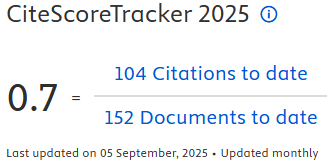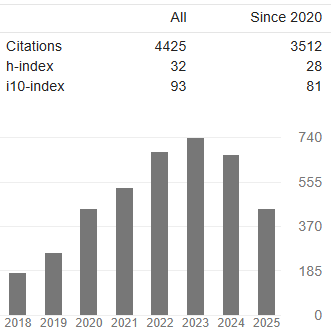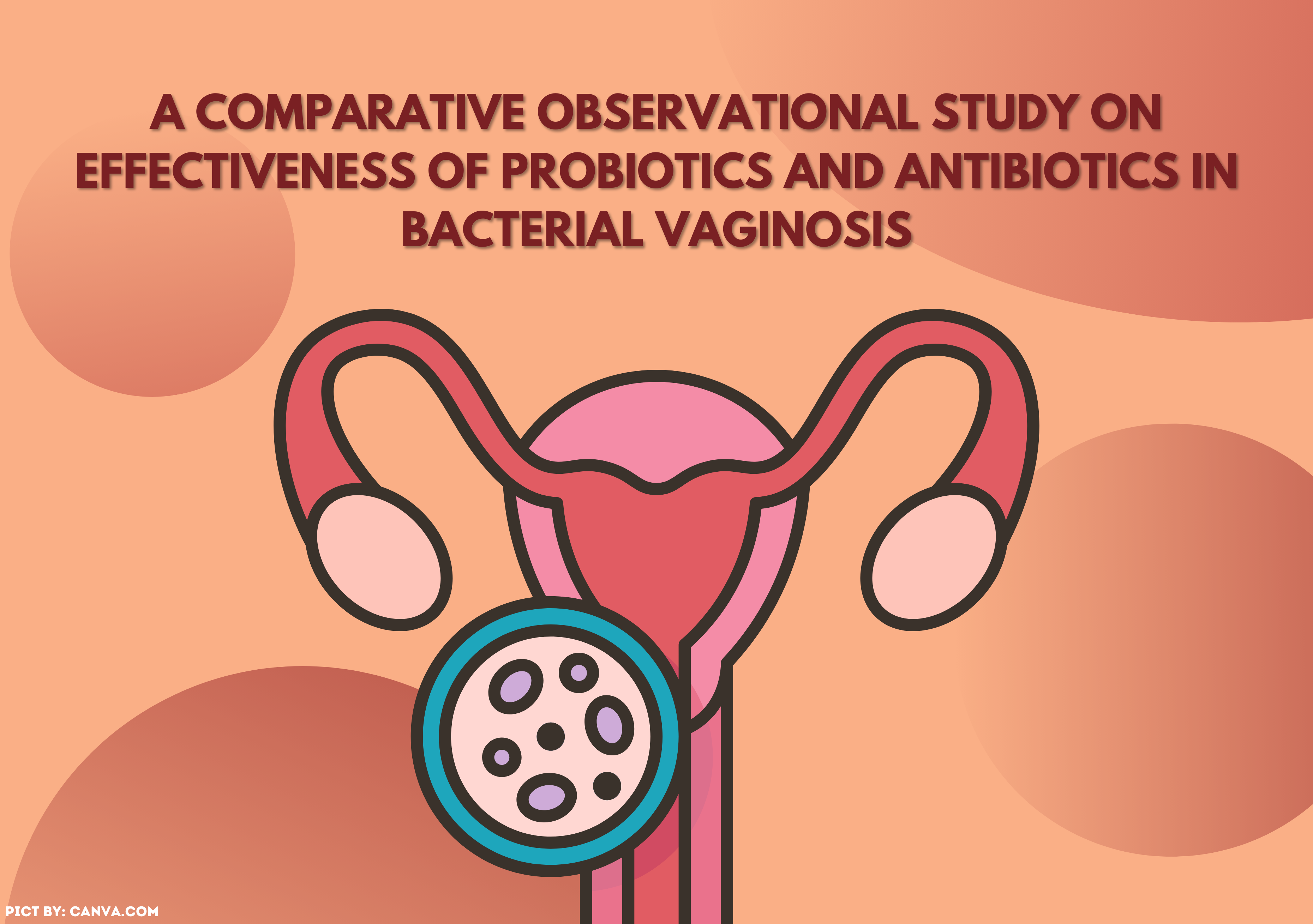A COMPARISON OF M-ESTIMATION AND S-ESTIMATION ON THE FACTORS AFFECTING IR DHF IN EAST JAVA IN 2017
Downloads
ABSTRACT
Robust regression on M estimation and S estimation is the Ordinary Least Square (OLS) regression on the data outlier. East Java is one of the provinces in Indonesia with a high case fatalitiy rate (1.34%). The raising of Dengue Haemoragic Fever (DHF) in East Java has been influenced by climate, population density, human behavior, and environmental sanitation. This study aimed to compare robust regression research by using M estimation and S estimation on the factors that affect IR DHF. This was done to get the best model regression on the data outlier based on the biggest R2 adjusted and the smallest MSE. This study utitlized observational research with a non-reactive research design using secondary data. The independent variable consisted of population density, healthy behavior, healthy living environment house, and precipitation in East Java in 2017. The dependent variable was incident rate of DHF in 2017. The population included 38 regencies in East Java, while the sample was 35 regencies/cities selected using simple random sampling. The analysis used robust regression on M estimation and S estimation weighting by Tukey's Bisquare. Robust regression on S estimation was found to be the best robust regression on data outlier with R2 adjusted (0.996) and MSE (0.229). Robust regression on S estimation was = 54.826 + 0.011 (population density) – 0.136 (% healthy behavior) - 0,404 (% healthy house ) - 0,005 (precipitation).Some factors that affect IR DHF can be the main focus for the prevention and control of DHF for the government and society.
Keywords: robust regression, outlier, estimation, estimation, DHF
Ali, K. and Ma'rufi, I. (2016) ‘Study of Factors Caused Dengue Haemorrhagic Fever Case Study : Pasuruan , Jawa Timur- Indonesia', Journal of Medical and Bioengineering, 5(2), pp. 108–112. doi: 10.18178/jomb.5.2.108-112.
Alma, O. G. (2011) ‘Comparison of Robust Regression Methods in Linear Regression', International Journal Contemporary Mathematical Science, 6(9), pp. 409–421.
Central Bureau of Statistics of East Java Province (2018) Jawa Timur Province in Figures 2018. Surabaya.
Cahyandari, R. and Hisani, N. (2012) ‘Model Regresi Berganda Menggunakan Penaksir Parameter Regresi Robust M-Estimator (Studi Kasus : Produksi Padi di Provinsi Jawa Barat Tahun 2009)', VI(1), pp. 85–92.
Candraningtyas, S. et al. (2013) ‘Regresi Robust Mm- Estimator Untuk Penanganan Pencilan Regresi Robust Mm- Estimator', Jurnal Gaussian, 2(4), pp. 395–404.
CDC (2010) Epidemiology Dengue.
Dahlan, M. S. (2012) Regresi Linear Disertai Praktik dengan SPSS. Jakarta: Epidemiologi Indonesia.
Draper, N. R. and Smith, H. (1992) Analisis Regresi Terapan (Terjemahan dari Applied Regression Analysis). 2nd edn. Jakarta: Gramedia Pustaka Utama.
Gujarati, D. N. (2013) Basic Econometrics. 4th edn. Ne: McGraw-Hill/Irwin.
Hastuti, N. M., Dharmawan, R. and Indarto, D. (2017) ‘Sanitation-Related Behavior , Container Index , and Their Associations with Dengue Hemorrhagic Fever Incidence in Karanganyar , Central Java', 2, pp. 174–185.
Herawati, N., Nisa, K. and Setiawan, E. (2011) ‘Analisis Ketegaran Regresi Robust Terhadap Letak Pencilan: Studi Perbandingan', Bulletin of Mathematics, 3(01), pp. 49–60.
Hidayatulloh, F. P., Yuniarti, D. and Wahyuningsih, S. (2015) ‘Regresi Robust Dengan Metode Estimasi-S Robust Regression Method To Estimate - S', Eksponensial, 6(2), pp. 163–170.
Irianto, K. (2014) Epidemiologi Penyakit Menular dan Tidak Menular : Panduan Klinis. Bandung: Alfabeta.
Lainun, H. and Tinungki, G. M. (2018) ‘Perbandingan Penduga M , S , dan MM pada Regresi Linier dalam Menangani Keberadaan Outlier', Jurnal Matematika, Statistika dan Komputasi, 15(1), pp. 88–96.
Masriadi (2017) Epidemiologi Penyakit Menular. Jakarta: Rajawali Pers.
Monica, D., Devianto, D. and Yanuar, F. (2012) ‘Pemodelan Faktor-Faktor Yang Mempengaruhi Kejadian Dbd ( Demam Berdarah Dengue) Menggunakan Regresi Logistik Biner Untuk Wilayah Regional 2 Indonesia ( Sumatera )', Jurnal Matematika UNAND, VI(1), pp. 9–16.
Neter, J., Wasserman, W. and Kutner M, H. (1997) Model Linear Terapan (Terjemahan dari Applied Linear Model) oleh Bambang Sumatri. Edited by B. Sumatri. Bogor: FMIPA-IPB.
Pitselis, G. (2013) ‘Journal of Computational and Applied', Journal of Computational and Applied Mathematics. Elsevier B.V., 239, pp. 231–249. doi: 10.1016/j.cam.2012.09.009.
Prabowo, A. (2016) ‘Hubungan Perilaku Hidup Bersih dan Sehat (PHBS) dengan Frekuensi Sakit Anggota Keluarga', PROFESI, 13(2), pp. 60–65.
Pradewi, E. D. and Sudarno (2012) ‘Kajian Estimasi-M IRLS Menggunakan Fungsi Pembobot Huber dan Bisquare Tukey pada Data Ketahanan Pangan di Jawa Tengah', Media Statistika, 5(1), pp. 1–10.
Pramana, S. et al. (2017) Dasar-Dasar Statistika dengan Software R (Konsep dan Aplikasi). Kedua. Bogor: iN Media.
Prasetyowati, I. (2015) ‘Kepadatan Penduduk dan Insidens Rate Demam Berdarah Dengue (DBD) Kabupaten Bondowoso, Jawa Timur', The Indonesia Journal of Health Science, 5(2), pp. 1–12.
Rahmadeni and Anggreni, D. (2014) ‘Analisis Jumlah Tenaga Kerja Terhadap Jumlah Pasien RSUD Arifin Achmad Pekanbaru Menggunakan Metode Regresi Gulud', Jurnal Sains, Teknologi dan Industri, 12(1), pp. 48–57.
Rahman, M. B. and Widodo, E. (2018) ‘Perbandingan Metode Regresi Robust Estimasi Least Trimmed Square , Estimasi Scale , dan Estimasi Method Of Moment', in Prosiding Seminar Nasional Matematika (PRISMA), pp. 426–433.
Raksanagara, A. S. and Raksanagara, A. (2018) ‘Perilaku Hidup Bersih dan Sehat Sebagai Determinan Kesehatan yang Penting pada Tatanan Rumah Tangga di Kota Bandung', Jurnal Sistem Kesehatan, 1(1), pp. 1188–1197. doi: 10.1002/j.1875-9114.2012.01178.x.
Rousseeuw, P. J. and Leroy, A. M. (1987) Robust Regression and Outlier Detection. New York: John Wiley & Sons Inc.
Setiarini, Z. and Listyani, E. (2017) ‘Analisis Regresi Robust Estimasi-S Menggunakan Pembobot Welsch dan Tukey Bisquare', Jurnal Matematika, 6(1), pp. 48–55.
Shodiqin, A., Aini, A. N. and Rubowo, M. R. (2018) ‘Perbanding Dua Metode Regresi Robust Yakni Metode Least Trimmed Squares (LTS) dengan Metode Estimator-MM (Estimasi-MM) (Studi Kasus Data Ujian Tulis Masuk Terhadap Hasil IPK Mahasiswa UPGRIS )', Jurnal Ilmiah Teknosains, 4(1), pp. 35–42.
Sihombing, C. G., Nugraheni, E. and Sudarsono, W. (2018) ‘the Relationship Between Rainfall, Air Temperature and Wind Speed Effects Dengue Hemorrhagic Fever Case in Bengkulu City At 2009-2014', Jurnal Kedokteran Diponegoro, 7(1), pp. 366–380.
Soedarto (2012) Demam Derdarah Dengue. Jakarta: Sagung Seto.
Sofia, Suhartono and Wahyuningsih, N. E. (2014) ‘Hubungan Kondisi Lingkungan Rumah dan Perilaku Keluarga dengan Kejadian Demam Berdarah Dengue Di Kabupaten Aceh Besar The Relationship of Home Environmental Conditions and Family Behavior with Genesis Dengue In Aceh Besar', Kesehatan Lingkungan Indonesia, 13(1), pp. 30–37. doi: 10.14710/JKLI.13.1.30 - 38.
Suhermanto, Tunggul, S. T. B. and Widartono, B. S. (2012) ‘Spatial Analysis on Vulnerability to Dengue Hemorrhagic Fever in Kotabaru Subdistrict , Jambi Municipality , Jambi Province', Tropical Medicine Journal, 02(1), pp. 45–56.
Susanti, Y., Pratiwi, H. and Sulistijowati, S. (2013) ‘Optimasi Model Regresi Robust Untuk Memprediksi Produksi Kedelai Di Indonesia', in Seminar Nasional Matematika dan Pendidikan Matematika, pp. 978–979.
Umaya, R., Faisya, A. F. and Sunarsih, E. (2013) ‘Hubungan Karakteristik Pejamu, Lingkungan Fisik Dan Pelayanan Kesehatan Dengan Kejadian Demam Berdarah Dengue (Dbd) Di Wilayah Kerja Puskesmas Talang Ubi Pendopo Tahun 2012', Jurnal Ilmu Kesehatan Masyarakat, 4(November), pp. 262–269.
Yohai, V. J. (1987) ‘High Breakdown-Point and High Efficiency Robust Estimates For Regression', The Annals of Statistics, 15(4), pp. 1580–1592.
Yuniastari, N. L. A. K. and Wirawan, I. W. W. (2014) ‘Peramalan Permintaan Produk Perak Menggunakan Metode Simple Moving Average Dan Exponential Smoothing', Sistem dan Informatika, 9(1), pp. 97–106.
Yushananta, P. and Ahyanti, M. (2014) ‘Pengaruh Faktor Iklim dan Kepadatan Jentik Ae.Aegypti terhadap Kejadian DBD', Jurnal Kesehatan, 5(1), pp. 1–10.
- The authors agree to transfer the transfer copyright of the article to The Indonesian Journal of Public Health effective if and when the paper is accepted for publication.
- Authors and other parties are bound to the Creative Commons Attribution-NonCommercial-ShareAlike 4.0 International License for the published articles, legal formal aspect of journal publication accessibility refers to Creative Commons Attribution-NonCommercial-ShareAlike 4.0 International License (CC BY-NC-SA), implies that:
- Attribution ” You must give appropriate credit, provide a link to the license, and indicate if changes were made. You may do so in any reasonable manner, but not in any way that suggests the licensor endorses you or your use.
- NonCommercial ” You may not use the material for commercial purposes.
- ShareAlike ” If you remix, transform, or build upon the material, you must distribute your contributions under the same license as the original.































